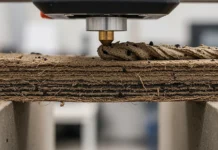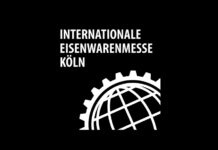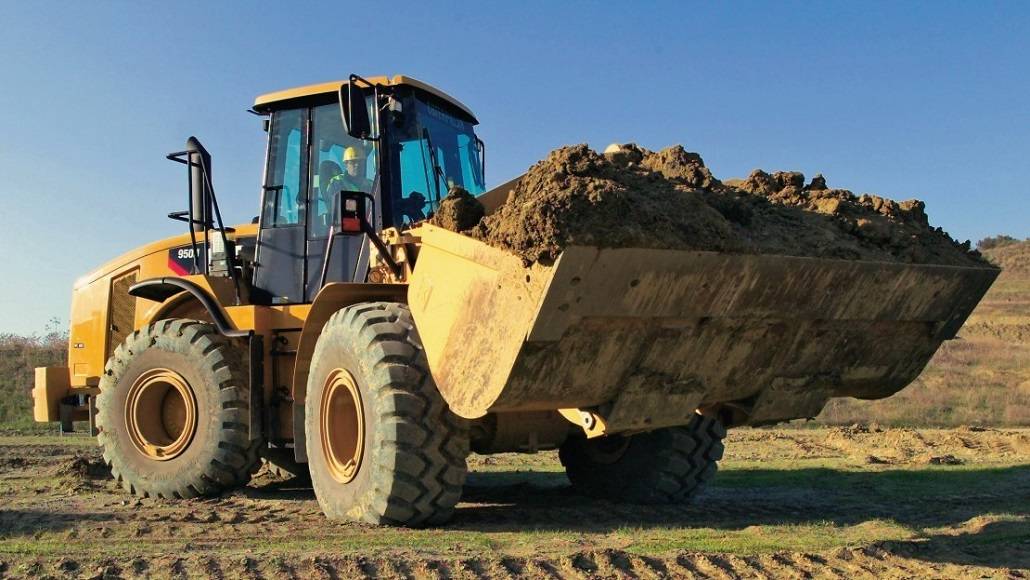Heavy construction equipment is a critical asset, as it can improve project efficiency, productivity and site safety. That said, there are many options for different applications and phases. Explore the most common types of construction equipment and discover reputable providers to source them from.
Methodology to Determine the Most Common Construction Equipment
Many factors can contribute to what makes certain equipment more common than others, including:
- Versatility and application range
- Market presence and rental availability
- Reliability and performance records
- Cost-effectiveness and return on investment
Usage frequency across construction sectors is also typically at the forefront, as machinery that makes an appearance in almost every project gets plenty of traction.
1. Excavators
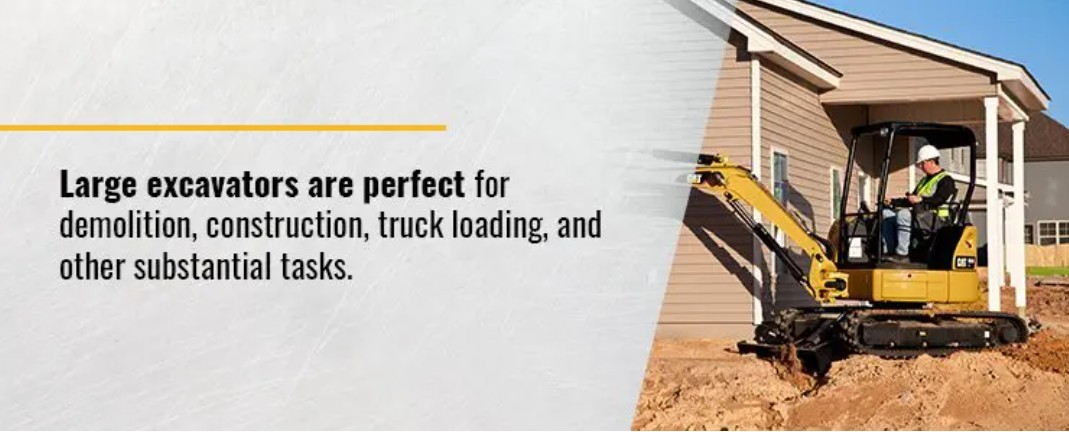
Excavators are earth-moving equipment responsible for digging up and moving soil. They typically comprise a rotating cab and bucket. Excavators for construction can come in different types, such as standard, mini, long-reach and demolition.
Excavators are useful for a variety of industries and applications, such as regular construction, demolition projects, mining worksites and more. Hydraulic and mini-hydraulic systems are among the most reliable and lightweight options, as their power is derived from hydraulic fluid.
Key specifications to consider:
- Operating weight and size
- Digging depth and reach
- Horsepower and hydraulic flow
- Bucket capacity and attachment options
2. Bulldozers
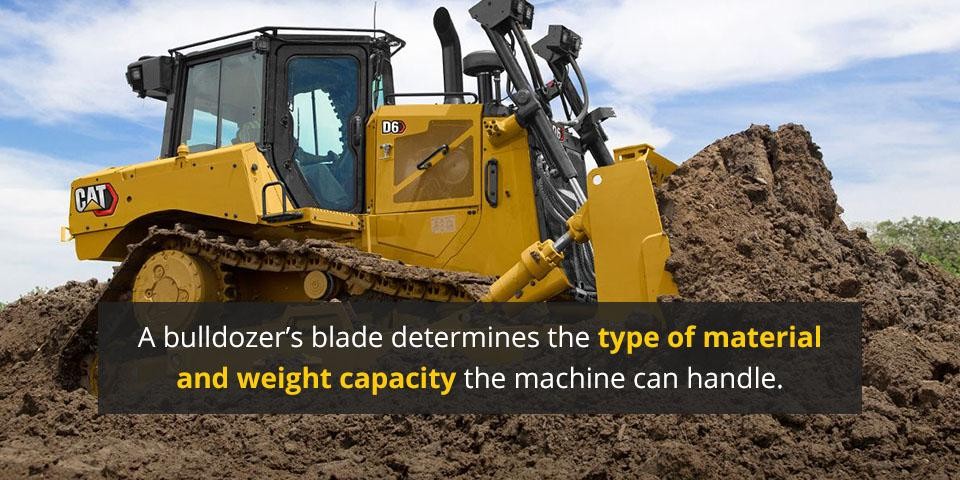
Bulldozers are tractors with a heavy metal blade on the front, designed to push soil, debris and other materials. Some may feature a large claw to hold a larger quantity, while others have a shank-like ripper to break up compacted ground.
Some businesses use bulldozers for construction, agriculture and demolition, while others use them for road work. Certain models, such as the D7 Dozer, can move up to 8% more material per hour than less powerful dozers.
Key specifications to consider:
- Engine power
- Blade types and applications
- Undercarriage systems
- Technological features like GPS grading
3. Backhoe Loaders
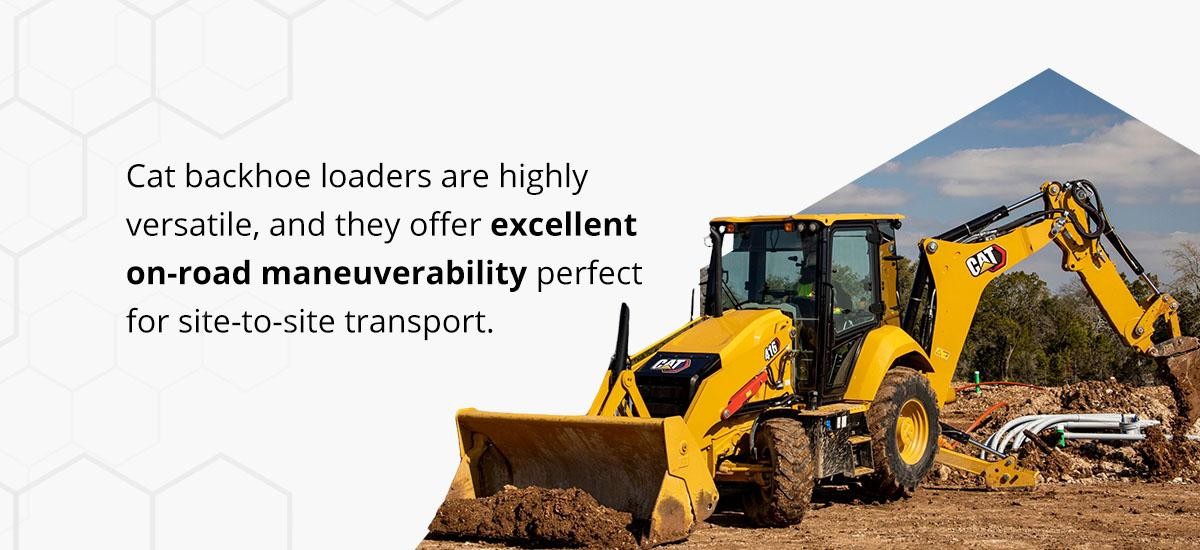
A backhoe loader is another type of earth-moving equipment that’s a cross between an excavator and a loader. It can handle digging and material handling. It typically features a digging bucket attachment at the back of its tractor.
A backhoe loader is generally ideal for medium-sized projects. However, assessing the differences between models is important. Base versions like the 416, 420 and 420 XE Backhoe Loader have fewer distinctions since they have the same net power and dig depth.
Key specifications to consider:
- Digging depth and loader capacity
- Horsepower and hydraulic systems
- Attachments and compatibility
4. Skid Steers and Compact Track Loaders
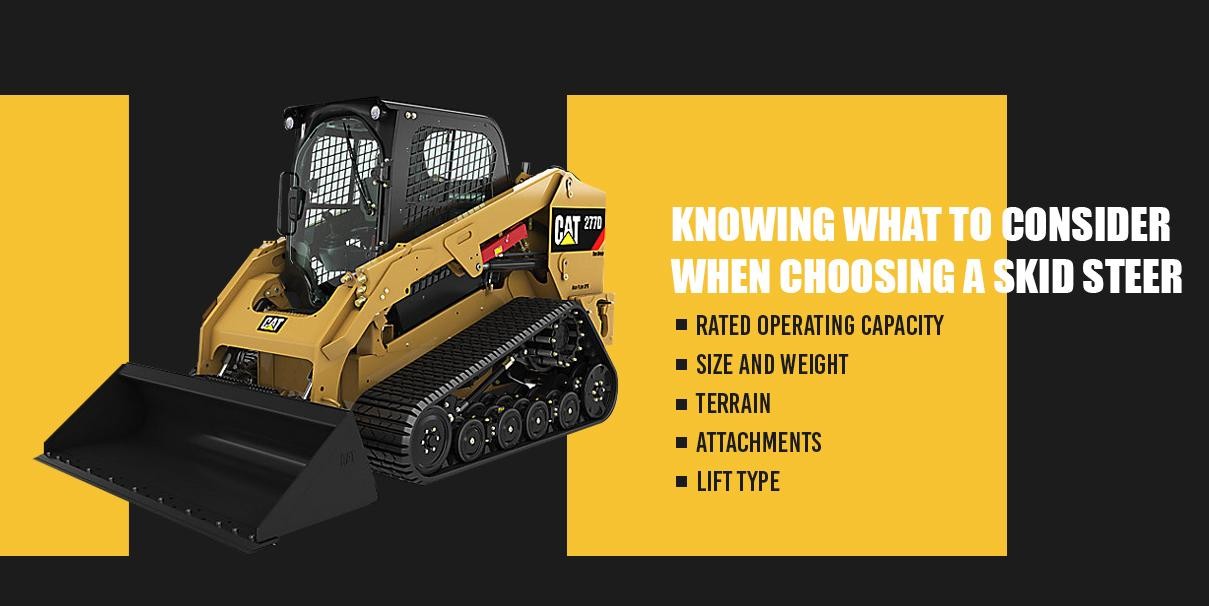
Skid steers and compact track loaders are two distinct earth-moving machines meant to lift and load soil or materials. The only difference is that skid steers have four wheels, while compact track loaders have rubber tracks. The latter is better for uneven terrain.
When looking at models, a 250 Skid Steer Loader is a great initial pickup for higher lift height and force. Meanwhile, the 249D3 Compact Track Loader brings extended reach and lift height. You can also explore attachments to increase possible use cases.
Key specifications to consider:
- Digging depth and loader capacity
- Horsepower and hydraulic systems
- Attachments and compatibility
- Wheels vs. tracks
5. Wheel Loaders
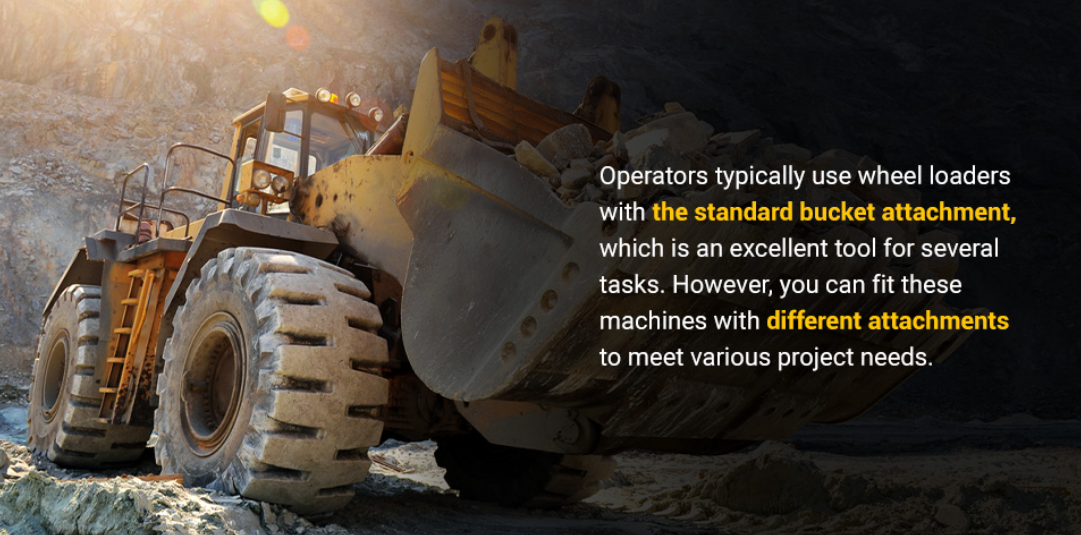
Wheel loaders are heavy construction vehicles with a front-mounted bucket. They are a common type of material-handling equipment made for carrying loose materials. Wheel loaders are available in both compact and large sizes to suit various projects.
While wheel loaders range in size and bucket capacities, models can also be distinguished by cab composition and fuel efficiency. For instance, the 920 Compact Wheel Loader is ideal because it offers all-around visibility. Meanwhile, the 914 Compact Wheel Loader emphasizes its standard fuel-saving features.
Key specifications to consider:
- Bucket capacity
- Breakout force
- Tipping load
- Articulation and maneuverability
6. Telehandlers
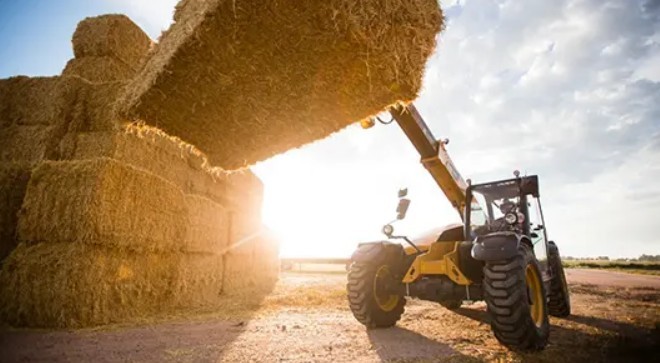
Telehandlers are hydraulic lifting machines with a high-extending mechanism that can carry and lower heavy materials. Their main appeal lies in their ability to accommodate different attachments, which increases their use cases.
Telehandlers typically change in terms of their rated load capacities. A basic model, such as the 2H255C Telehandler, has a rated load capacity of 5,500 pounds with a lift height of 18.37 feet. Upgrading to something like the TL1055 Telehandler can increase the capacity and height to 10,000 pounds and 54.9 feet.
Key specifications to consider:
- Lift height and capacity
- Forward reach capabilities
- Attachment options
- Stabilizer systems
7. Compactors and Rollers
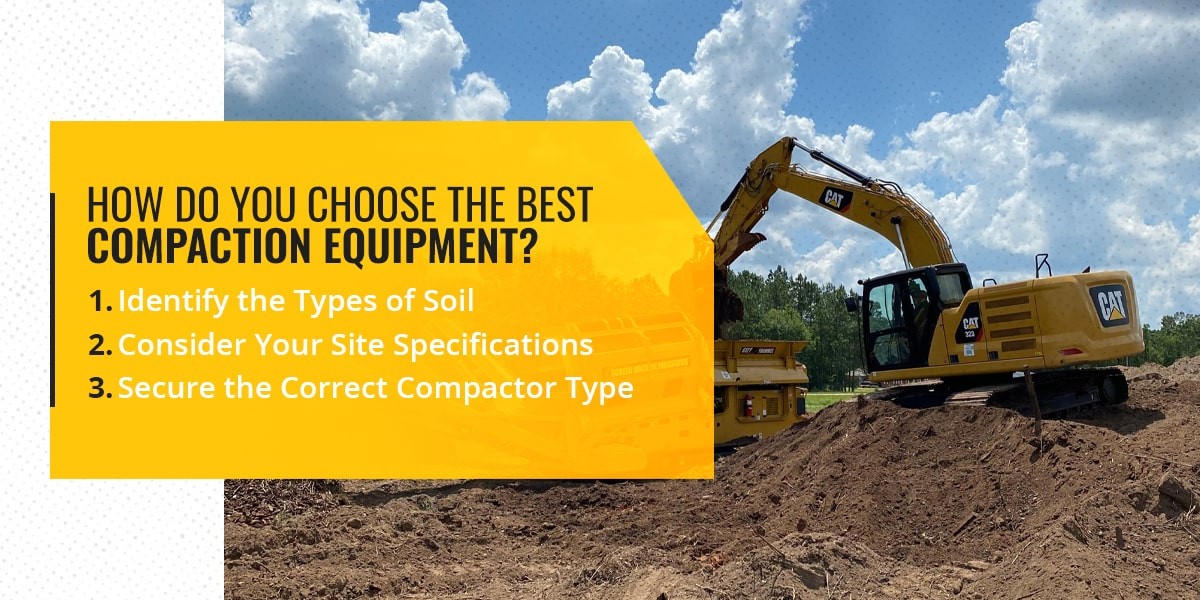
Compactors make terrain denser, improving the foundation for most infrastructure. Rollers are a variation that tends to have a wider body and a more ride-on design. These kinds of machinery can also come in various types, such as smooth drum, padfoot, pneumatic and more.
Operating weights are also important to consider. The CW34 Pneumatic Roller Cam has a base operating weight of 22,050 pounds, which increases to 59,525 pounds with maximum ballast. You can compare gross and net power for other models, such as the 815 Soil Compactor and 826 Landfill Compactor.
Key specifications to consider:
- Static weight and drum width
- Vibration frequency and amplitude
- Compaction measurement systems
Equipment Selection by Project Type
Common types of heavy construction equipment can vary depending on the part of the industry and its priorities. Here’s a comparison table of different applications:
| Application | Possibly construction equipment | Main consideration | Priority |
| Residential construction | Excavators, backhoes, bulldozers, dump trucks | Limited space and access | Cost-effectiveness, especially for smaller contractors |
| Commercial building projects | Excavators, cranes, concrete mixer trucks, dump trucks | Urban environments | Project efficiency, especially on larger construction sites |
| Infrastructure and heavy civil | Excavators, bulldozers, loaders, backhoes | Challenging terrain and conditions | High-capacity options for major earthwork |
| Specialty construction | Cranes, excavators, bulldozers, concrete pumps | Niche and versatile equipment types for specific applications | Adaptation of standard equipment for special needs |
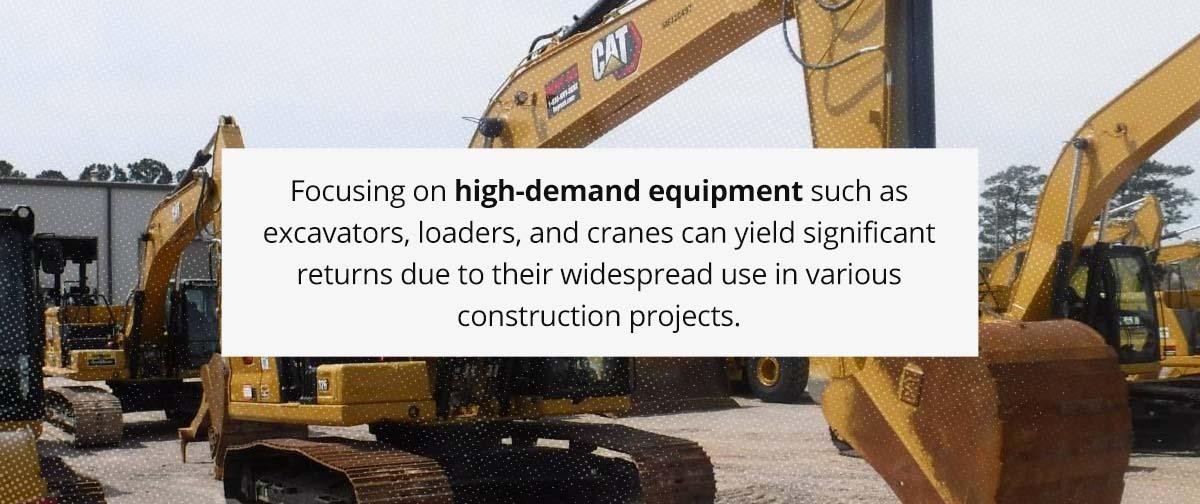
Equipment Acquisition Strategies
There are numerous ways to acquire heavy construction equipment, and it’s essential to know your preferred method before contacting a brand. Here’s a comparison table for each option:
| Strategy | Pros | Cons |
| Buying new equipment | Getting the latest technology
Connecting to support programs and training |
Higher upfront investment
Funding parts and maintenance long-term |
| Buying used equipment | Significant cost savings
Wide range of options |
Risk in lifespan and reliability
Potential lack of a warranty |
| Renting or leasing equipment | Low upfront costs
Flexibility in schedule and storage |
Continuous payment during downtime
Limited modifications without permission |
How to Select the Best Equipment Providers
Brands will have their own inventory of heavy construction equipment. Here are the key factors to consider when searching for a top provider.
| Industry reputation and longevity | Are they deliberate with the quality and longevity of their supply? Can they provide reliable machinery and fair terms and conditions? |
| Customer satisfaction and support networks | Is the customer experience their top concern? What kind of services and support networks are set up to ensure user satisfaction? |
| Innovation and technological advancement | Are they up to date on the technological advancements in construction machinery? Do they participate in providing industry-specific education and distribution of these options? |
| Parts availability and serviceability | Are parts always ready and available to minimize downtime? Can they perform on-site service 24/7? |
Dealer Spotlight of the Year: Thompson Tractor
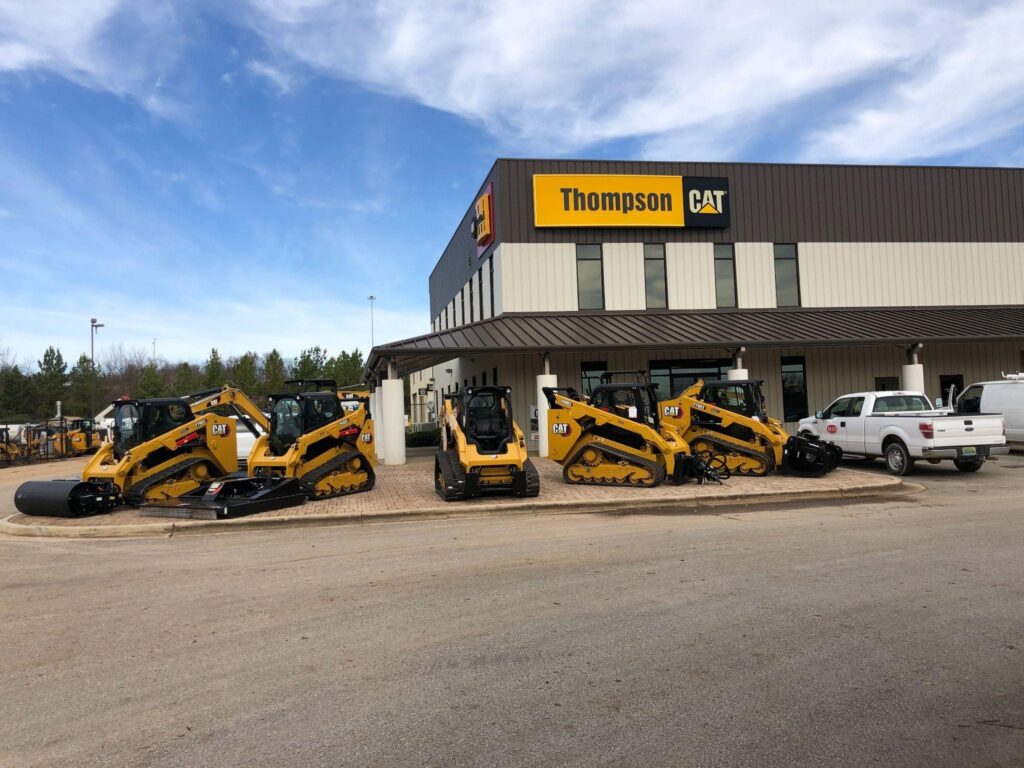 Thompson Tractor has been serving employees, customers and suppliers with construction essentials for more than 65 years. It specializes in providing equipment solutions for industrial, construction, material handling and farming sectors throughout Alabama and Northwest Florida.
Thompson Tractor has been serving employees, customers and suppliers with construction essentials for more than 65 years. It specializes in providing equipment solutions for industrial, construction, material handling and farming sectors throughout Alabama and Northwest Florida.
With Thompson Tractor, you can explore new and used equipment and rent existing machinery. New equipment buyers can access a range of services, including equipment management technology and preventive maintenance. Support programs and training are also available to help individuals achieve independence.
The brand also provides competitive offers for parts, service and equipment. These can range from special pricing to 0% interest for certain equipment. Deals are subject to change, so check the duration and terms and conditions.
Securing the Right Tool for the Job
Many key equipment types are on the market, from earth-moving to material-handling machinery. Identify which tools are most essential for your project’s specific needs and budget. By carefully considering the application, acquisition strategy and provider, you can make a sound investment that boosts site efficiency and ensures your project is built on a solid foundation.




